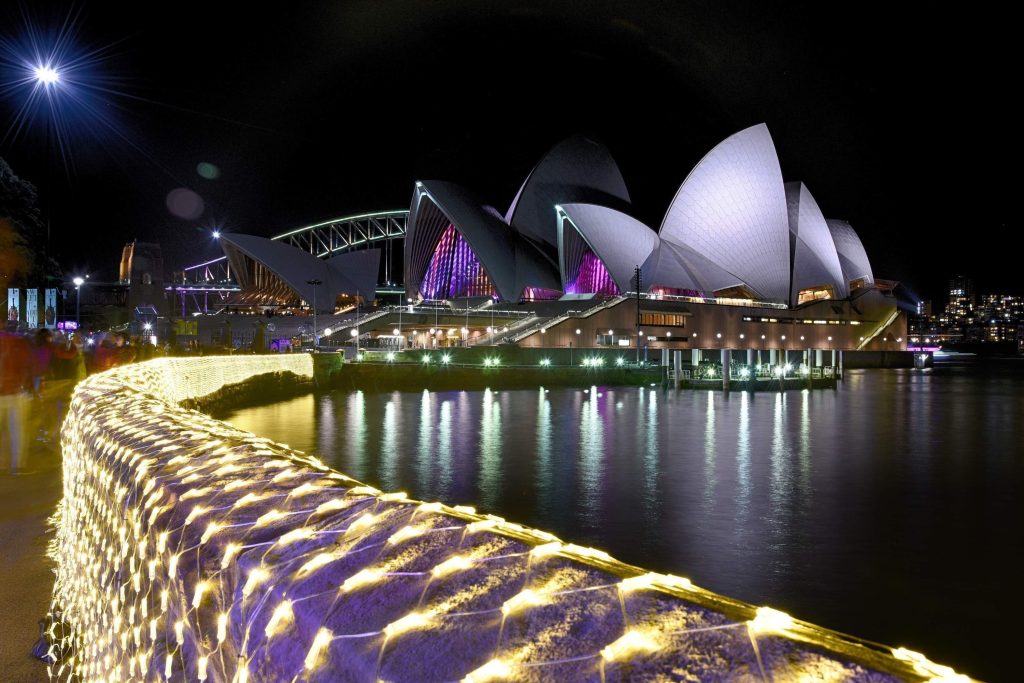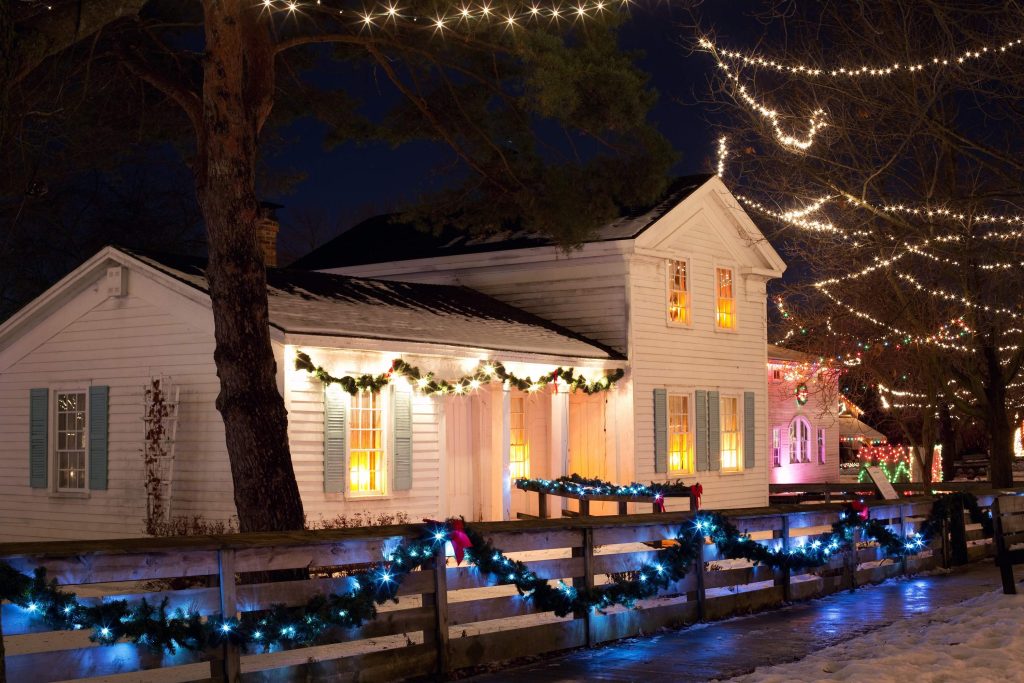An Easy Guide to Hanging Outdoor String Lights on Fences
The Importance and Benefits of Outdoor String Lights
As nightfall descends, an ordinary backyard can transform into a magical oasis embellished by the soft, enchanting glow of landscape string lights. These twinkling gems, especially when strung along fences, not only enhance the aesthetic appeal of outdoor areas but also significantly contribute to function and security.
String lights adorned along fences provide subtle yet effective landscape lighting that enhances visibility in our yards during dusk or in pitch-black darkness. Whether these fences are wood or vinyl, every material gets a radiant uplift with the aid of these twinkling lights.
They beautifully accentuate the shapes and structures within your yard while creating an inviting ambiance for outdoor gatherings with family and friends. Moreover, outdoor string lights serve as a strategic deterrent for potential intruders – a visually pleasing yet potent shield of light.
They illuminate dark corners that could otherwise be utilized as hiding spots by unsavory characters. The environmental impact is another noteworthy benefit. LED landscape string lights utilize less energy compared to traditional incandescent or halogen bulbs; hence, they are more environmentally friendly.
Choosing solar-powered options further reduces this eco-footprint while eliminating dependency on power supply outlets. While their primary purpose might seem decorative, outdoor string lights are versatile implements of design that deliver practical benefits without compromising style and personal taste.
Shedding Light on Planning: Factors to Consider when Hanging Outdoor String Lights
Planning is pivotal to successfully installing outdoor string lights along fences. This entails considering multiple factors encompassing aesthetics as well as operational practicality.
The type of fence material dictates certain aspects of the installation procedure – wood fences permit direct nailing or screwing; however, with vinyl fences, you may need to opt for non-invasive methods like adhesive hooks or ties. It’s essential to ensure that the method used does not damage or compromise the integrity of your fence.
A factor often overlooked is the power source. Are there readily available outdoor outlets, or will extension cords be needed? For a greener alternative, solar-powered string lights could be considered, provided there’s ample sunlight during the day for charging.
The purpose of adding string lights also influences planning. Is it to create a dreamy ambiance for late-night gatherings, or do you require landscape lighting for safety and visibility? This decision impacts your choice of light intensity, color temperature, and even bulb spacing.

Another crucial element is measuring the length of the fence accurately to determine how many strings of lights you’ll need. Running short on lights midway through installation can cause unnecessary inconvenience and delays.
Remember that quality matters! Investing in durable, weather-resistant landscape string lights ensures long-term performance and reduces the need for frequent replacements due to exposure to outdoor elements.
In essence, planning should harmoniously blend aesthetics with practicality while reflecting personal style preferences. Armed with careful planning and an eye for design, one can transform their backyard into an illuminated haven that combines beauty with functionality under a mesmerising canopy of light.
Understanding the Basics
A Sublime Spectrum: Types of Outdoor String Lights
There’s a sublime spectrum of outdoor string lights, each offering unique attributes that can cater to specific needs and preferences. Incandescent bulbs, LED bulbs, and solar-powered lights are among the most prevalent types.
Incandescent Bulbs: The Timeless Appeal
Incandescent bulbs have an archetypal charm with their warm glow reminiscent of traditional holiday lights. They are often used for landscape string lights due to their superior color rendering index (CRI), enabling them to produce natural light that is pleasing to the eye. However, they tend to consume more energy and have a shorter lifespan compared to other types.
The timeless appeal of incandescent bulbs makes them a favorite choice for installing along fences. They perfectly accentuate vinyl fences with their lavish luminosity while also enriching the organic aesthetics of wood fences with their soft diffusion.
LED Bulbs: Energy Efficiency at Its Best
LED bulbs are high on energy efficiency, translating into lower electricity costs and longer bulb life expectancy compared to incandescents. They emit less heat and are available in a diverse range of color temperatures, giving users ample flexibility in creating desired ambiance.
When strung along fences, LED landscape lighting imbues spaces with ambient brilliance without sending energy bills through the roof. These string lights can beautifully illuminate vinyl fences or add depth to wood fence installations at night.
Solar-Powered Lights: Harnessing Natural Energy
Solar-powered string lights offer an environmentally friendly option that harnesses natural sunlight during the daytime and then radiates as gleaming light at nightfall. They’re ideal for areas where there’s plenty of exposure to direct sunlight.
However, these may not be as bright as those powered by electricity, but they still manage a commendable job of decorating fences, especially for casual evening gatherings or just simple landscape lighting enhancements.
Styles and Lengths: Choreographing Luminous Patterns
Outdoor string lights come in a multitude of styles and lengths. Common styles encompass globe lights, fairy lights, and Edison bulbs, each offering a distinct aesthetic.
The length of string lights is contingent upon the area that needs lighting. It’s not uncommon to find landscape string lights available in strands ranging from 10 to 100 feet long.
To choreograph luminous patterns highlighting your fences properly, measure the length along fences where you want the lights to hang. This will help you determine how many strands you’ll need for a cohesive look.
Safety Considerations: Keeping Hazards at Bay
Safety should never be overlooked when dealing with electrical components such as outdoor string lights. Always ensure power outlets are covered when not in use and avoid overloading circuits with too many strings connected simultaneously.
It’s crucial to use outdoor-rated extension cords and timers for outside lighting works, such as along fences. Furthermore, if your fence is wooden, consider using clips instead of nails or staples to hang your string lights, as the latter can potentially damage both the fence and the light strand insulation, causing potential hazards.
Envisioning Your Luminary Landscape
The process of hanging outdoor string lights on fences commences with a pivotal phase: planning your lighting design. The first step is to ascertain the purpose of your landscape lighting.
Are you seeking to foster an enchanting ambiance for evening garden soirees? Or is your primary aim to bolster security along fences, illuminating potential hiding places? The answer will influence not only the type and intensity of light but also the positioning and density of bulbs on your fence.

Next, you need an accurate estimation of how many lights you’ll require. This necessitates measuring the length of your fence with precision. As a rule of thumb, space bulbs approximately 3 feet apart along fences for a balanced distribution. Bear in mind that this spacing may vary based on the type and size of bulbs or personal aesthetic preferences.
The third planning stage involves sketching out your desired layout and pattern. Here, you can let your creativity shine. Perhaps you envision cascading lights on a wood fence, or maybe you prefer evenly spaced landscape string lights along vinyl fences for a more modern appearance.
Gearing Up: Essential Tools and Materials
With a clear vision in place, it’s time to gather the tools and materials needed for installation. First up are essential tools such as a hammer, nails, or clips (depending upon whether you’re working with wood or vinyl fences), and possibly an extension ladder if needed.
Choosing weather-resistant strings is crucial considering they’ll be exposed to varying weather conditions throughout seasons. Opt for string lights designed specifically for outdoor use, which carry durability features like UV protection and water resistance.
Furthermore, don’t undermine safety while installing landscape lighting along fences by ensuring appropriate safety equipment is at hand, like gloves and safety goggles – these can help prevent accidents during installation.
Preparation: Setting the Stage
Before starting installation, it’s important to prepare your fence. This includes cleaning and repairing any damage on the fence, such as loose boards or peeling paint. Ensuring a solid, clean surface will make the installation process smoother and enhance the final aesthetic.
Next, mark the points for light placement based on your design. This will help you maintain an even distribution of lights along fences and make the installation quicker and more efficient.
Installation: The Main Event
The next step is to attach the nails or clips, followed by hanging the outdoor lights on the fences. First, choose your starting point – this should ideally be near a power source for easy access.
Once you’ve installed the first bulb, continue securing the string along your pre-marked points using nails (for wooden fences) or clips (for vinyl ones).
Remember to maintain an even distribution of lights throughout to avoid clusters of brightness in one area and shadows in others.
Troubleshooting and Maintenance
At times, you may encounter common issues like broken or non-functional bulbs. In such cases, replace them immediately to prevent overloading other bulbs in the circuit. Power supply issues can also occur – ensure your power source is reliable and consistent.
Maintaining landscape lighting entails regular cleaning procedures, which include wiping down bulbs with a damp cloth to remove accumulated dust and debris that can dull their glow over time.
For long-term preservation during off-seasons or inclement weather conditions, proper storage solutions are essential, like packing them neatly in secure boxes after thorough drying.
Conclusion: How to Hang Outdoor String Lights on Fences?
Meticulous planning, proper preparations amidst the necessary tools and materials at hand, followed by careful installation coupled with regular maintenance, not only brings the landscape string lights to life, but also adds mystical charm, highlighting the inherent beauty of the lush landscapes along the fences.
This post bolsters the idea that little strands of luminary bliss aren’t just about festivity but also transcend into creating secure, enchanting outdoor spaces. Be it vinyl or wood fences, landscape string lighting can truly transform your nocturnal outdoor experience into something welcoming and magical.
You may also be interested in the following posts:
